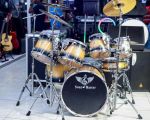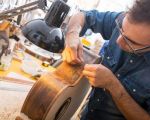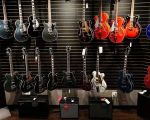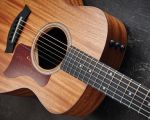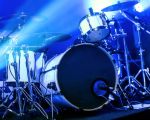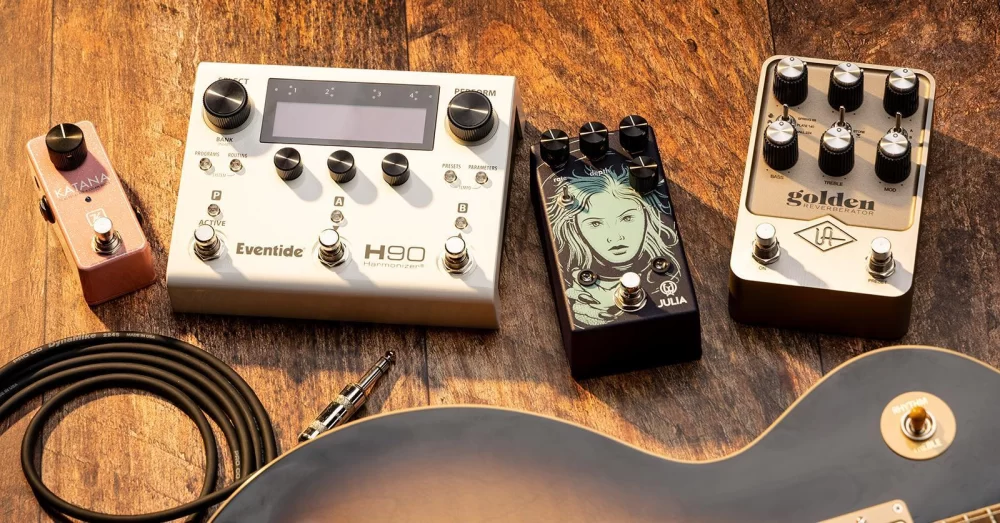
Best Guitar Pedals for Achieving Unique Sounds
If you're a guitarist, you know how important it is to find the perfect tone that reflects your unique style. Over the years, guitar pedals have become essential tools for musicians looking to add character, depth, and creativity to their sound. Whether you're into rock, blues, jazz, or experimental genres, the right pedal can take your music to new heights. In this article, I'll dive into some of the best guitar pedals out there that can help you achieve those distinctive and unique sounds you're searching for.
1. Distortion Pedals: Creating Powerful and Gritty Tones
Distortion is one of the most popular effects that musicians use to add power and grit to their playing. But not all distortion pedals are created equal. While classic distortion pedals give you that classic rock crunch, modern versions allow for more versatility and finer control over your tone. Some of the top contenders in the market today include the Pro Co RAT 2 and the BOSS DS-1. These pedals are famous for their ability to create a wide range of tones, from subtle overdrive to full-blown, high-gain distortion. Personally, I remember the first time I used a RAT 2 pedal, it was like flipping a switch, and I was instantly transported to that gritty, saturated sound I had always dreamed of.
2. Delay Pedals: Adding Depth to Your Sound
Delay pedals are another staple for any guitarist looking to add depth and ambiance to their playing. A good delay pedal allows you to repeat your notes with varying levels of time delay, which can add a huge sense of space to your music. My favorite delay pedal, the Electro-Harmonix Holy Grail, offers a range of reverb and delay effects that work wonders, especially for creating those atmospheric, dreamy sounds that are so popular in ambient and post-rock music. Whether you're looking for a quick slapback delay for rockabilly or a long, haunting echo for shoegaze, a delay pedal is a must-have for any guitarist looking to explore unique sonic territories.
3. Reverb Pedals: Making Your Sound Bigger
Reverb pedals are all about creating space around your sound. They simulate the natural echoes that occur in a room, cave, or hall, giving your guitar tone that larger-than-life feel. If you want your guitar to sound like it's playing in a huge concert hall or in a small, intimate room, a reverb pedal is essential. The TC Electronic Hall of Fame is a top choice among many guitarists, providing various reverb styles that can suit any musical genre. I remember playing with the Hall of Fame for the first time during a live gig, and I was amazed at how it made my guitar tone feel like it was floating in a massive, echoing space.
4. Overdrive Pedals: Subtle yet Powerful
Overdrive pedals are often used by musicians who want to add warmth and depth without pushing their amp into full distortion. They’re perfect for players who want to maintain clarity while adding that extra bit of harmonic content. One overdrive pedal that stands out is the Ibanez Tube Screamer, which has been used by legends like Stevie Ray Vaughan and John Mayer. The Tube Screamer is known for its smooth overdrive that allows the nuances of your playing to shine through. I’ve used this pedal countless times in my live shows and studio recordings, and it’s always the perfect addition to a clean tone when I want to add just a touch of grit without losing definition.
5. Chorus Pedals: Bringing a Richer Tone
Chorus pedals work by duplicating the signal and then slightly modulating it in pitch and time, creating a shimmering, warbling effect. This is ideal for adding thickness and movement to your sound. A popular choice among guitarists is the BOSS CH-1 Super Chorus, which has become an industry standard. If you’re a fan of 80s rock or new wave, a chorus pedal is a great tool to achieve that lush, wide sound. I recall when I first plugged into a BOSS CH-1, I felt like my guitar was enveloped in a rich, liquid-like tone that perfectly complemented my band's full sound.
6. Wah Pedals: Expressive and Soulful
Wah pedals are another classic effect that adds expressiveness to your playing. Known for their unique “wah-wah” sound, they’re often used in solos or to add a bit of funk to rhythm playing. The Dunlop Cry Baby Wah is the go-to choice for many musicians. I remember experimenting with a Cry Baby pedal during a jam session, and it opened up a whole new dimension to my soloing. Whether you're creating a classic 70s funk vibe or a psychedelic guitar solo, a wah pedal will allow you to manipulate your tone in ways that other pedals can’t.
7. Looper Pedals: Creating Layers of Sound
If you're someone who enjoys looping live performances or experimenting with multi-layered compositions, a looper pedal is an essential tool in your pedalboard. The Boss RC-3 Loop Station is a great option that allows you to record and loop your guitar in real-time. I've spent countless hours using a looper to build up intricate soundscapes, creating lush compositions with just my guitar and the pedal. Looper pedals are perfect for solo artists, and they offer the opportunity to get creative with your sound, layering different rhythms, melodies, and effects on top of each other.
8. Phaser Pedals: Adding Movement to Your Sound
Phaser pedals are fantastic for adding movement and swirl to your tone. They work by shifting the phase of the signal and creating a sweeping sound. The Electro-Harmonix Electric Mistress is a legendary phaser pedal that can transform your playing with its classic swooshing sound. I remember when I first heard someone play through an Electric Mistress pedal; it was like listening to a spaceship landing, and I instantly knew I needed to get my hands on one. Whether you’re playing slow ballads or fast, intricate solos, a phaser pedal adds that extra dimension of texture to your sound.
9. Fuzz Pedals: Creating Thick, Saturated Tones
Fuzz pedals are great for creating thick, saturated tones that make your guitar sound almost like a full-on distortion amp. If you're a fan of early rock and psychedelic music, a fuzz pedal is essential to capture that raw, gritty sound. The Big Muff Pi by Electro-Harmonix is one of the most iconic fuzz pedals ever created, loved by artists like David Gilmour and Jimi Hendrix. I remember plugging into one at a guitar shop, and it instantly gave my playing this heavy, almost otherworldly tone that was perfect for my experimental projects. Fuzz pedals work great for creating bold, in-your-face sounds that cut through the mix during live performances.
10. EQ Pedals: Sculpting Your Perfect Tone
Equalizer (EQ) pedals are crucial for sculpting the perfect tone for your guitar. They allow you to adjust the bass, midrange, and treble frequencies of your signal, letting you shape your sound to fit the exact tone you’re looking for. The MXR 10-Band EQ is a powerful tool for fine-tuning your sound. I’ve used an EQ pedal to tailor my tone for different genres, whether it's boosting the lows for a heavier rock sound or cutting the mids for a more subtle, jazz-like tone. Having an EQ pedal in your setup gives you complete control over your tone and allows you to experiment with different sonic textures.

